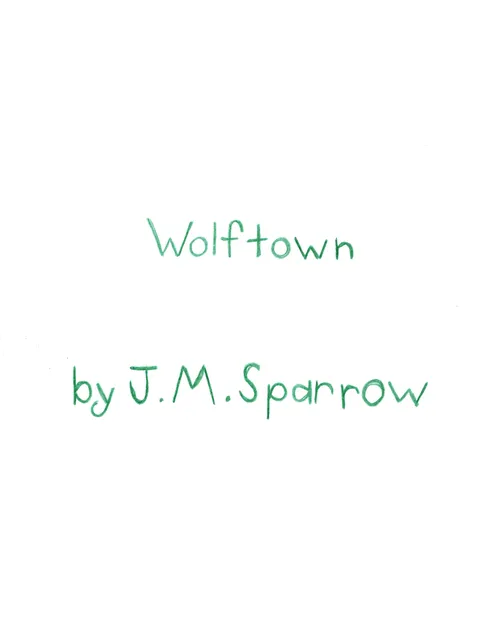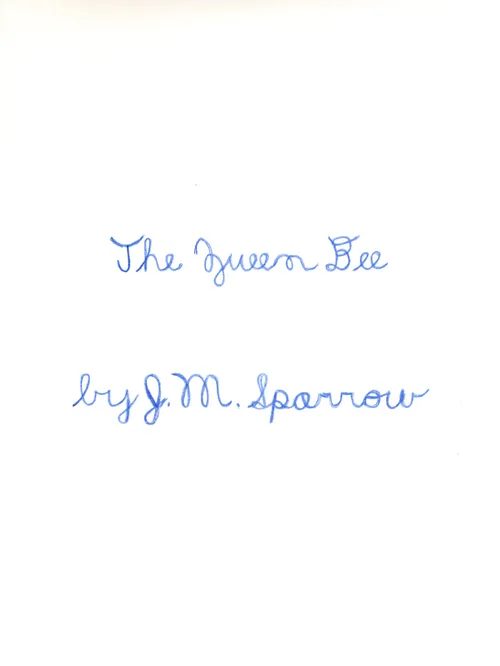Sheriff Jordan asked Schuster if he considered vengeance upon Laufenberg, and Schuster assured him however much Laufenberg disgusted him and how much he hated Laufenberg’s action, he was not vengeful, and he would not violate Laufenberg’s civil rights.
“Can I ask why, sir?” Schuster asked, thinking he had done something wrong.
“I thought you’d like to read his charge sheet to him,” Sheriff Jordan said.
“Really?”
“Around him, you can’t show weakness or panic, and you can’t act tougher than him. I’ve seen you react to some of the evidence, but you can’t in the interrogation room or a courtroom. Do you think you can do that?”
“I think so.”
Sheriff Jordan had Schuster watch interview footage until Schuster controlled his expressions.
“A short-sleeve shirt showing your scars will remind him he couldn’t win,” Sheriff Jordan said.
“Okey-dokey.”
Laufenberg proceeded to deny his crimes as a böxenwolf, claim forgetfulness, or say, “I invoke my Fifth Amendment right to remain silent.” He appeared to legitimately listen to the evidence, and Sheriff Jordan wondered if Laufenberg was imagining a grand explanation.
Schuster and Laufenberg had not been in the same room since March 12, and Schuster worried about seeing him again. But he followed Sheriff Jordan into the jail’s interrogation room.
Laufenberg glared, and the handcuffs and footcuffs caught him as he stood up. Sheriff Jordan and Schuster ignored him, though Schuster worried Laufenberg heard his heart rate speed up.
Laufenberg growled and vocalized similarly to a wolf. Schuster flinched but steadied himself.
A couple of minutes later, Schuster read the charge sheet. He almost said, “first degree homicide of a law enforcement officer, Zachary Foster,” in the same tone as the other victims.
In the hallway, Schuster leaned against the wall and almost cried.
“You did well,” Sheriff Jordan said.
“How can you be around him and be calm?”
“I’m not, but pretending to be calm keeps the situation calm. Pretending makes me calm.”
The fact that Dennis Laufenberg had been charged with his crimes relieved him; a jury would find him guilty of some.
Then Laufenberg hung himself in his cell, and Corey was happy. Although Schuster wished for a trial, his death relieved the worry that Laufenberg would leave prison and re-offend. Megan wanted Laufenberg to spend the rest of his life in prison.
Sheriff Jordan believed that Laufenberg committed the wolf attacks, but the District Attorney said that he needed more forensic evidence or a jury’s verdict before closing the cases. Because Corey witnessed Joel Block’s death, his case was solved, with Laufenberg identified as the murderer.
When the investigations ended, John officially researched the wolf aspects. His report gave no opinions about the existence of böxenwolves but pointed out the origin of the wolf straps and Wolftown’s fences. He mentioned all crimes against wolves.
Corey pled guilty, although Kevin thought Laufenberg coerced her to some extent, and she asked for the maximum sentence. She was sentenced to twelve years' imprisonment.
The böxenwolf case stalled, but it remained open, passing from detective to detective. Throughout Sheriff Jordan’s three terms in office, every deputy reviewed at least one victim’s case.
Schuster became a detective in 2003.
Cassidy Brown and Mitchell Foster would eventually ask questions about their parents, and the victims’ families knew less than expected about the wolf attacks and Dennis Laufenberg. Megan, Kevin (with his clients’ consent), Miranda, John, and Tara Schuster compiled accounts and wrote short explanations. The compilation included contributions from Wayne, Schuster, Sheriff Jordan, Corey Brown, and other major figures. Kevin pointed out few people enjoyed reading statistics and court documents, and it could be difficult and confusing. They edited the work again.
For Mitchell’s first birthday, Wayne gave him a lifetime pass to Happy Howlers, worried he might fear or hate wolves.
Wayne and Schuster improvised exposure therapy to wolves, but he disliked them.
To hide his scars on duty and most of the time when in public, Schuster wore long-sleeve shirts year-round.
If people asked about the bite scars, he said either a wolf, a criminal, or böxenwolf bit him, depending on the audience and how much he felt like explaining. Megan sporadically added “monster” to the list, but cautiously around Mitchell when he was young. Schuster did not contradict her, but Sheriff Jordan thought “monster” dehumanized Laufenberg, Corey, and Tyler.
When Schuster became the lead detective on the böxenwolf cases, he promised the victims’ families he would work on the case until he solved it or became mentally or physically unable. Wayne jokingly called him Javert.
Mitchell noticed Schuster’s scars as a very young child. He poked them and said, “Why that?”
Schuster said, “A bad guy was biting me.”
“Ow.”
“Yeah, it hurt. Your dad fought the bad guy and saved my life.”
“Why?”
“Your daddy loved me. I’m sorry I couldn’t save your dad’s life.”
“Daddy love me. Love you.”
“We loved each other.”
“Me love.”
“I love you, too.”
In 2010, Sheriff Hayes was elected and he made the böxenwolf case a cold case. Still, Schuster worked on it, especially Sergio. He waited impatiently for DNA technology to improve.
In 2012, Corey moved to Texas, but Aunt Karen and Schuster knew her address, just in case something happened to Cassidy. Corey and Cassidy had little direct contact.
Psychiatrists considered Corey delusional, and she abandoned the idea of speaking with them. She remained sober and found a steady job.
On March 9, 2017, Corey attempted suicide by taking illegal sleeping pills and alcohol, but after taking them, she called Schuster’s landline. She told him she attempted suicide at home, and on his cellphone, he called the Dallas non-emergency number and told them her address. Schuster had some trouble understanding Corey’s words.
“Did Dennis Laufenberg kill me?” she asked.
“What do you mean?” Schuster asked, but he thought, Not as far as I know.
“It’s because of him.”
“You committed suicide because of what he did to you?”
“Yeah.”
“Legally, he didn’t kill you, but I’d personally consider you another person who died because of him.”
Schuster remained on the phone until he heard the EMTs arrive. Corey survived. She never attempted suicide again, on the basis that if she committed suicide due to Dennis Laufenberg, he killed her indirectly.
A teenager howled at Schuster once, and others tittered; Mitchell heard and objected, but Schuster said, “Mitchell Zachary.” Mitchell cooperated against his wishes. Schuster explained that he ignored wolfish comments.
None of the law enforcement officers who investigated Sergio’s death determined why Laufenberg buried him alone or why he buried him differently than Joel. Some investigators seriously considered that Dennis Laufenberg delegated hiding the body to Tyler or possibly Corey, while he destroyed the Vasquezes’ campsite.
Probably, Dennis Laufenberg hid Sergio far from the new camp because finding two bodies killed within two weeks of each other and buried in the same county in the same manner would be connected. Different burial methods could slow down investigators. Laufenberg could have preferred burying one—Joel Block, judging from the direction—in another county, but found it impractical.
Other than the böxenwolf case, Schuster had an average rural Wisconsin career in the Sheriff’s Department, and through his promotions, he remained the lead investigator on the böxenwolf cases.
Schuster read about investigators extracting a murder victim’s DNA from ashes, or paleontologists finding DNA millions of years old. Experimenters who extracted DNA from washed clothing. One case was solved with 120 picograms of DNA, which was equivalent to less than fifteen human cells.
Joel Block had the least DNA evidence, and none was collected on Sergio’s clothes. Schuster knew the wolf bit and tore his clothes, leaving DNA evidence at some point.
In the woods, metal detectoring tourists dug up a metal cookie tin, and inside it, a journal and a pen waterproofed in two Ziplock bags. They read a few pages and reported to the police.
Schuster had them fingerprinted and he asked a few questions, but determined they were unconnected to the böxenwolf case. They only knew what the Wolftown Museum said.
The journal described the wolf attacks as they happened, and it matched Laufenberg’s fingerprints and handwriting. He wrote hastily and briefly, but disjointed.
Schuster organized a metal detector hunt along the wolf tracks and found another journal. It filled some gaps and made others.
Then he organized a metal detector search of every former campsite Corey could remember. In one, they found a camcorder, a Polaroid camera, photographs of the wolf hunt, and a journal. The journal filled the caps and Schuster thought Laufenberg had one camcorder for everyday life and one for incrimination materials.
Corey knew Laufenberg had the documents somewhere, but their location had flummoxed her.
John earned a master’s degree and a PhD in biology, then he studied cryptozoology. Laufenberg sparked his curiosity.
With any specific type of cryptid, John thought comparing the results of each sample would show consistencies and inconsistencies, and the samples could be considered connected or unconnected. To find the patterns, he used an AI program. The program worked well on animals known to exist.
Sheriff Hayes and Sheriff Jackson refused to send precious DNA evidence to a cryptozoologist, but when Schuster became sheriff, he asked John which samples he required.
John chose the victims with the most DNA evidence, which included Schuster, although Schuster generally avoided calling himself a victim. John asked for the wolf straps, Laufenberg’s DNA, the victim’s DNA, the victim's clothing that contained the suspect’s DNA, and the piece of fused flesh and wolf strap that the surgeon removed from Laufenberg.
Schuster sent samples from other victims, but he hesitated about Sergio and Joel Block. Such little DNA survived on the men’s clothing, and their victims’ decomposition obscured it.
After testing each sample, the AI program and John filtered through the inconclusive results.
The inconclusive samples had a great deal of similarities, except for the all-flesh and all-wolf strap samples. Schuster had seriously wondered if Sergio was connected to the other victims, but his sample had the same similarities. Where the flesh and wolf strap merged, John found an inconclusive sample with the same characteristics as the other inconclusive samples.
Finally, John determined that the suspect’s DNA was from two living things, similarly to how a human’s DNA showed a father's and a mother’s DNA. The two parts of the suspect’s DNA were Laufenberg and his Eurasian wolf strap.
The next set of samples Schuster sent showed Laufenberg’s DNA and the wolf’s DNA together. So, Schuster sent Sergio and Joel’s samples. They had the same results.
People debated the accuracy of John’s DNA methods, since it matched nothing found in recognized animals, but there was an identifiable suspect’s DNA on clothing that did not belong to him, and there was no innocent reason for the DNA evidence.
Schuster closed the cases. Laufenberg committed the murders.
Schuster called the families first, then released the statement.
John, Megan, and Miranda reworked their compilation as a book, giving thorough evidence, including details not released to the public. They edited one fat, complete version for the families and they and a Wolftown reporter rewrote the work into one concise version for publication.
Unknowingly, Schuster had accustomed himself to the stress of Laufenberg’s cases, and the stress vanished. He had memorized many details he wished he could scrub from his brain, and the case affected his home life. Although his stress lowered, the case continued to affect him personally. But because solving the case gave closure to the families and ensured justice was carried out, Schuster did not mind the effects on him.






This story has not been rated yet. Login to review this story.